Why ficus turns yellow - causes, treatment and prevention
Ficus is one of the most common home-grown plants. It feels great both in rooms and in winter gardens. Ficus is credited with many useful properties, for example, the tree perfectly cleans the air and harmonizes the atmosphere of the room. The plant is considered quite unpretentious, but sometimes troubles occur with it. For example, one often hears the question "Why does the ficus turn yellow?" This is the most common cultivation problem. The information provided for the gardener will help solve this problem, find out the reasons for the appearance of yellow leaves and how to deal with this ailment.
Content
- Description of ficus and its features
- Improper care
- Pests and diseases
- How to fix the situation
- Prevention of the appearance of yellow leaves
Description of ficus and its features
In nature ficus grows in subtropical forests, in Asia, Africa, America and Australia. There are about 900 plant species in the world. Ficus is more often found in the form of a tree, reaching 50 m in height. The plant begins its long life, as a rule, on the branches of another tree. This method of development is very similar to epiphytic orchid... Ficus lowers aerial roots from the branches of other trees to the ground.
Having reached the soil, a new shoot grows and a young ficus tree is formed. All sprouted young trees are associated with the main aerial roots. The tree on which the ficus grows dies over time. So the ficus develops in nature and forms whole groves. Sometimes it is difficult to believe that a huge ficus grove is just one tree that has grown to this size with the help of shoots.
Ficus has many forms - these are bushes, trees and bushes-lianas.
At home, you can grow both a fluffy bush and a small tree. Liana-like ficuses are grown less often, due to the difficult care for them.
Features of the structure of the ficus:
- All forms, as a rule, have oval, shiny leaves of a juicy green color. The oval shape is often closed by an elongated "nose".
- The color of the leaves can be two or three colors.
- In nature, ficus blooms with unusual inflorescences. They resemble fruits rather than flowers.
- In falling plant species, the inflorescences are called figs or figs.
- Depending on the variety and species, they can be edible and poisonous. It is almost impossible to achieve flowering at home.
Given the natural features of the structure and method of development, the gardener should carefully select a place for the ficus. The plant loves large spaces, bright diffused light, warmth and humidity. Almost all types of ficus do not tolerate drafts. In summer, the optimum air temperature for it will be 23 ° -25 °. In winter - 15 °. The plant loves the sprinkling procedure during the period of active growth.
Florists advise using only settled water at room temperature. It is desirable that it was rainwater. Another main condition for the successful growth of a tree is its permanent habitat. Frequent movement of the ficus can destroy it. Therefore, you need to choose a place once and for all.Knowing all the features of the structure of the ficus, its content and care, you can easily determine the causes of the appearance of yellow leaves.
Improper care
The most common mistake of florists when growing ficus is the wrong watering... The plant is either poured or overdried. In order to determine the moisture content of an earthen coma, you must:
- Get yourself a wooden stick. Its length should match the height of the pot.
- After dipping the stick into the substrate to the very bottom, pull it out after a few seconds.
- Examine the cane for moisture and soil adhesion. If the stick is evenly in moist soil, then the problem is not in the moisture of the substrate. If its bottom is dry and the top is wet, it means that the earth ball is unevenly moistened.
Thoroughly spill the entire substrate. Loosen the top layer. This happens very often. It seems that the soil is moist, but in fact the earthen lump below is dry and the tree dries up. The whole crown begins to turn yellow. Remember that in the summer, the ficus needs abundant, but not excessive, watering. In winter, it is cut in half.
Another cause of yellowing leaves can be bright sunlight that directly hits the plant.
Ficus does not like direct sunlight. Therefore, it should be placed where there is a bright, but diffused light. The constant movement of the pot with the tree can also cause the crown to turn yellow. Ficus must be kept in one place, even if it is only about the corner in the room.
Sometimes flower growers cannot understand the reason for the yellowness of the crown, since they comply with all the conditions cultivation and leaving... However, one small nuance is not taken into account - a draft or an air conditioner. If the breeze is constantly walking in the room, this can serve as the appearance of the yellowness of the crown. Moreover, the leaves will begin to fall off, and the plant may die. Therefore, watch out for drafts and try not to create them.
Pests and diseases
Very often the plant is affected by such pestslike scale insects, spider mites and mealybugs. It is very simple to detect the appearance of parasites - the crown of the ficus begins to fall off and turn yellow, sometimes the color of the leaves becomes gray or colorless. But the first signal is the massive fall of foliage.
If you see whitish deposits on leaves or shoots, brown or yellow spots, take action immediately. Process plant with insecticides or soap solution. The appearance of pests can be avoided by observing the rules of care and maintenance of the ficus.
Often the plant is affected by fungal diseases.
They appear, as a rule, together with pests. The reason for their appearance is dry air and high indoor temperatures. To avoid the appearance of fungal diseases, treat the crown of the ficus with fungicides. Use a weak solution of drugs. This measure will avoid the appearance of yellow leaves and their falling off.
How to fix the situation
If a favorite plant is sick or attacked pests, the florist needs to resort to the use of insecticides or fungicides... But the first step is to correct errors in the care and maintenance of the plant. Calculate all possible care errors - wrong watering, insufficient or excessive lighting, dry air, lack of sprinkling, drafts. Begin to gradually eliminate all the flaws and the plant will straighten out over time.
You can almost always save a ficus.
Even if there are only bare branches left on the tree, it will be able to give new shoots and release young leaves, provided the care regime is corrected. Do not despair and do not be intimidated by the yellowness of the crown, the situation can be corrected quickly enough.
Prevention of the appearance of yellow leaves
The first and most important rule when growing ficus is proper care and maintenance of the plant. Following simple rules, the florist will not face the problem of a yellow crown and falling foliage.
The conditions for growing and caring for ficus are as follows:
- Permanent location (do not rearrange the tree pot)
- Bright but diffused light (do not expose the crown to direct sunlight)
- Timely watering
- Sprinkling procedure in summer
- Top dressing during the period of active growth
- No drafts
- Summer temperature of the content - 25 °, winter - 15 °
Observing all of the listed conditions of maintenance and care, the risk of diseases, pests or the yellowness of the crown will be reduced or reduced to nothing. It is not difficult to grow a luxurious bush or ficus tree. It is considered a very unpretentious plant. However, strict adherence to the rules leaving welcomed. Thus, the florist will proudly display his ficus!
More information can be found in the video.



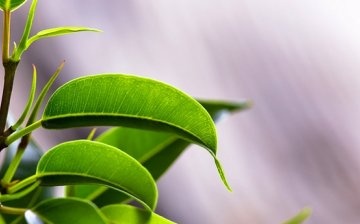
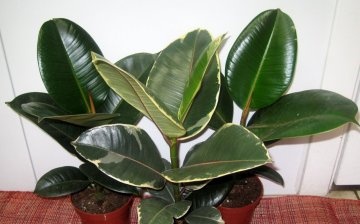
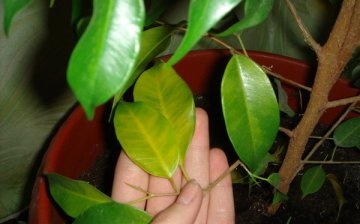
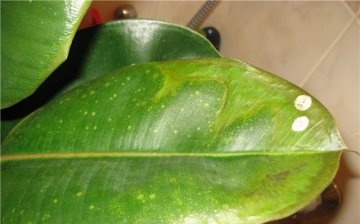
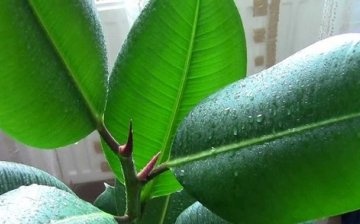
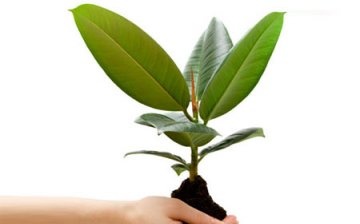






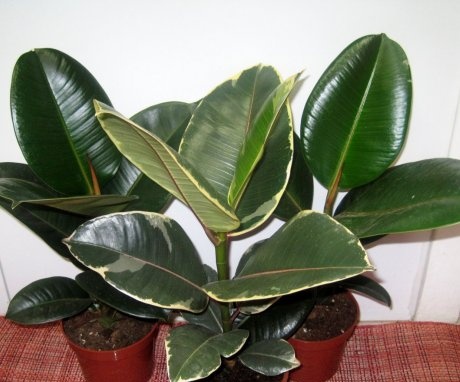
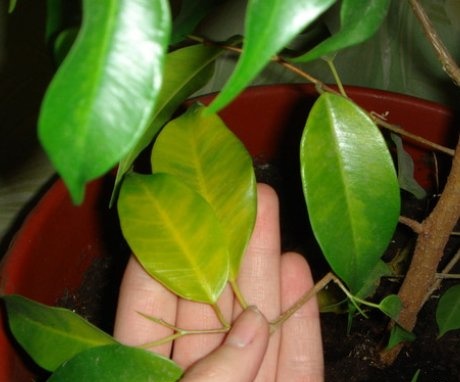
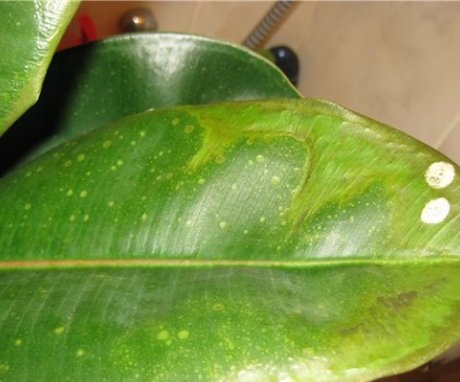

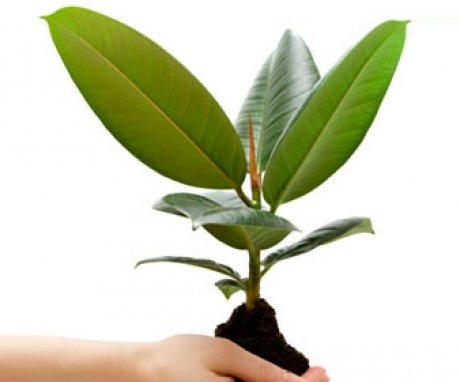
We have a ficus growing in our room, it is mainly in the room with windows facing south. From eternal to mid-autumn we take out the tree to the balcony. We water the plant about once a week, fertilize it rather rarely, but the ficus grows and its leaves have a juicy, green color.